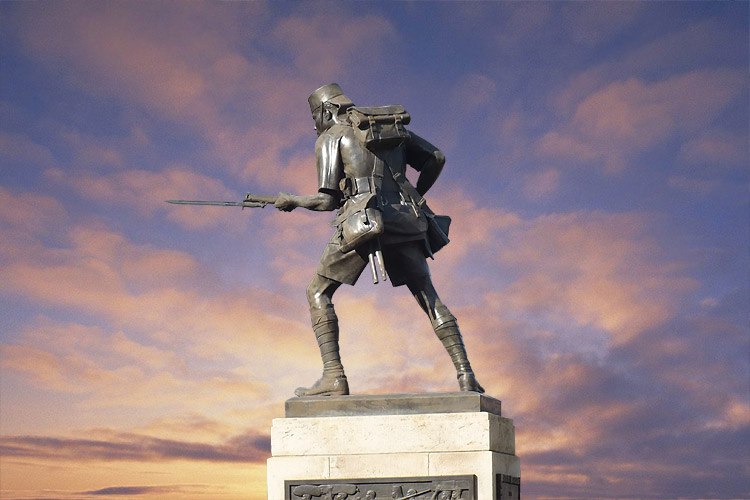| From Wikipedia, the free encyclopedia The
Askari Monument in Dar es Salaam, Tanzania, is a
memorial to the askari soldiers who fought in the
British Carrier Corps in World War I. It is located
at the center of roundabout between Samora Avenue
and Maktaba Street, a place that reportedly also
marks the exact center of downtown Dar. It was
unveiled in 1927.
The main feature of the monument is "The Askari",
a bronze statue of a soldier. It was realized in the
United Kingdom by British sculptor James Alexander
Stevenson, who worked for Westminster's Morris
Bronze Founders. Stevenson signed the statue with
pseudonym "Myrander". Before being sent to Dar es
Salaam, the statue was exhibited for a while at the
Royal Academy, receiving critical praise. The
soldier has a rifle with a bayonet pointed towards
Dar's harbour. The statue stands on a pedestal. On
the front side of the pedestal there is a plaque
with a dedication by Rudyard Kipling, both in
English and in Swahili translation.
In the place where the Askari Monument is located,
there used to be another statue, namely that of
German explorer and army Major Hermann von Wissmann,
governor of German East Africa in the late 19th
century. This former statue, unveiled in 1911,
represented Wissmann standing, one hand on his hip
and one on his sword, looking towards the harbour;
at his feet, an African soldier covering a dead
lion's body with a German flag. When the British
entered Dar es Salaam in 1916, they demolished this
statue along with those of Karl Peters and Otto von
Bismarck.
The monument in Dar es Salaam belongs to a group
of three Askari Monuments that were all unveiled the
same year in different parts of what was then
British East Africa: the other two are at Mombasa
and Nairobi.
|
